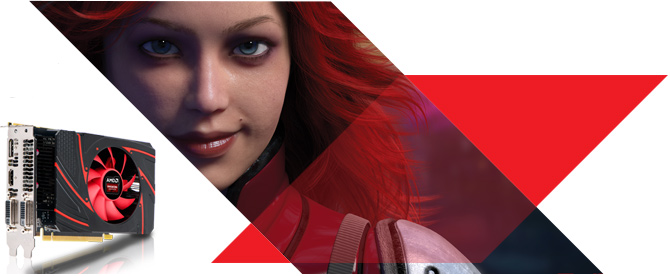Advanced Micro Devices and its partners have already started to prepare for the arrival of the next-generation graphics processing units, according to a media report. XFX, one of leading suppliers of Radeon graphics adapters, already has AMD Radeon R9 370 “Trinidad Pro” graphics cards in its catalogue.
VideoCardz has published an excerpt from XFX’s list of upcoming products, which claims that the company is working on two Radeon R9 370 graphics cards: one with 2GB, whereas another with 4GB of GDDR5 memory onboard. The new adapters are projected to arrive in early April, which contradicts the information that AMD wants to roll out the whole Radeon R9 300-series family at once.
Both Radeon R9 370 graphics cards carry “Trinidad Pro” graphics processors and feature 256-bit memory bus. The graphics boards are built on relatively short six-layer printed circuit boards (of around 167mm in length) with one 6-pin auxiliary PCI Express power connector, which indicates that they are relatively affordable. It is likely that the Radeon R9 370 will cost considerably less than $199.
It is expected that the “Trinidad” graphics processing units are based on the GCN 1.2 or GCN 1.3 architecture, but their exact configurations are unknown. It is likely that the fully-fledged “Trinidad XT” will feature 1536 or 1664 stream processors (24 or 26 GCN compute units), but the configuration of the “Trinidad Pro” is completely unclear.
If the information about the launch schedule of the Radeon R9 370 “Trinidad Pro” is correct and AMD plans to roll out these products in early April, then the company has probably changed its plans considerably. While in the past AMD did introduce new mainstream GPUs separately from high-end offerings, this did not make a lot of sense. Such graphics chips never attract a lot of attention no matter how innovative they are and therefore their introductions do not receive a lot of coverage.
AMD and XFX did not comment on the news-story.
Discuss on our Facebook page, HERE.
KitGuru Says: While Radeon R9 370 “Trinidad Pro” does not seem to be a very expensive solution from costs point of view, it is still likely more expensive to manufacture than Nvidia’s GeForce GTX 960 due to 256-bit memory bus. While the GeForce GTX 960 is positioned for higher-end market segment, Nvidia can easily lower it price or introduce its cheaper version if the Radeon R9 370 harms its positions in the lower-end segments.
 KitGuru KitGuru.net – Tech News | Hardware News | Hardware Reviews | IOS | Mobile | Gaming | Graphics Cards
KitGuru KitGuru.net – Tech News | Hardware News | Hardware Reviews | IOS | Mobile | Gaming | Graphics Cards





Re-upload images please. Says “file not found” when opened in another tab.
File not found.
Early april, I wonder when AMD will reveal the complete specs and price of the high end cards then, and of course how that will effect prices of the 290 series and how the new cards will compare.